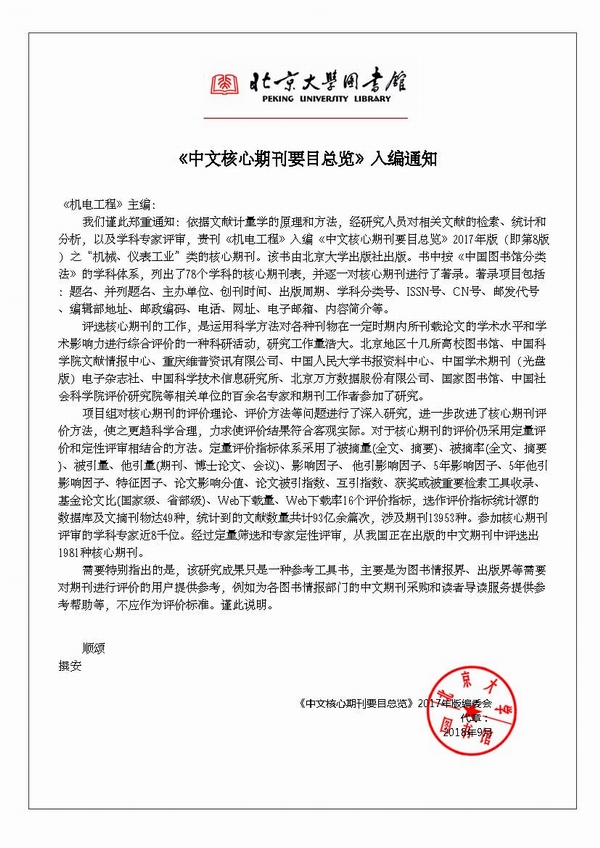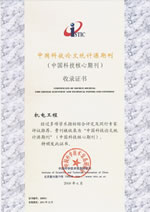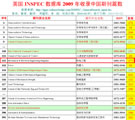
Founded in 1971 >
Chinese Sci-tech Core Periodicals >
British Science Abstracts (SA, INSPEC) Indexed Journals >
United States, Cambridge Scientific Abstract: Technology (CSA: T) Indexed Journals >
United States, Ulrich's Periodicals Directory(UPD)Indexed Journals >
United States, Cambridge Scientific Abstract: Natural Science (CSA: NS) Indexed Journals >
Poland ,Index of Copernicus(IC) Indexed Journals >
International Standard Serial Number:
ISSN 1001-4551
Sponsor:
Zhejiang University;
Zhejiang Machinery and Electrical Group
Edited by:
Editorial of Journal of Mechanical & Electrical Engineering
Chief Editor:
ZHAO Qun
Vice Chief Editor:
TANG ren-zhong,
LUO Xiang-yang
Tel:
86-571-87041360,87239525
Fax:
86-571-87239571
Add:
No.9 Gaoguannong,Daxue Road,Hangzhou,China
P.C:
310009
E-mail:
meem_contribute@163.com
Abstract: To address the challenges posed by the poor sensitivity of traditional degradation indices to the onset of bearing degradation and the inability to accurately predict the remaining using life (RUL) of wind turbine bearings due to trend shifts in degradation indices, a bi-exponential method for predicting bearing RUL was proposed. This method was based on the combination of Teager's energy arithmetic-ratio of failures to energy (TFER) and degradation trend (DT) similarity detection. Firstly, the TFER value of the original signal was calculated to determine the bearing degradation starting point following the 4σ principle. The trend feature of the TFER value was then extracted as a degradation indicator. Subsequently, a bi-exponential degradation model was fitted using historical TFER values. Then, the best DT segment was chosen by analyzing the similarity between the latest TFER values and the fitted curve. Finally, the wind turbine bearing RUL was predicted by extrapolating the DT segment with the best similarity to the failure threshold. The experimental results show that the prediction method achieves 98% accuracy in detecting the degradation onset time point, and improves 10.04%, 6.29%, and 5.22% in bearing RUL prediction accuracy compared with the original exponential model, the long-and short-term memory neural network (LSTM), and the support vector regression (SVR), respectively. This method not only improves the accuracy of predictive maintenance of wind turbine bearings, but also provides strong support for reducing operating costs and improving maintenance efficiency.
Key words: wind turbine bearing; remaining using life (RUL); biexponential predicting method; Teager energy operator; failure-to-energy ratio (FER); similarity analysis; degradation trend (DT) similarity detection








